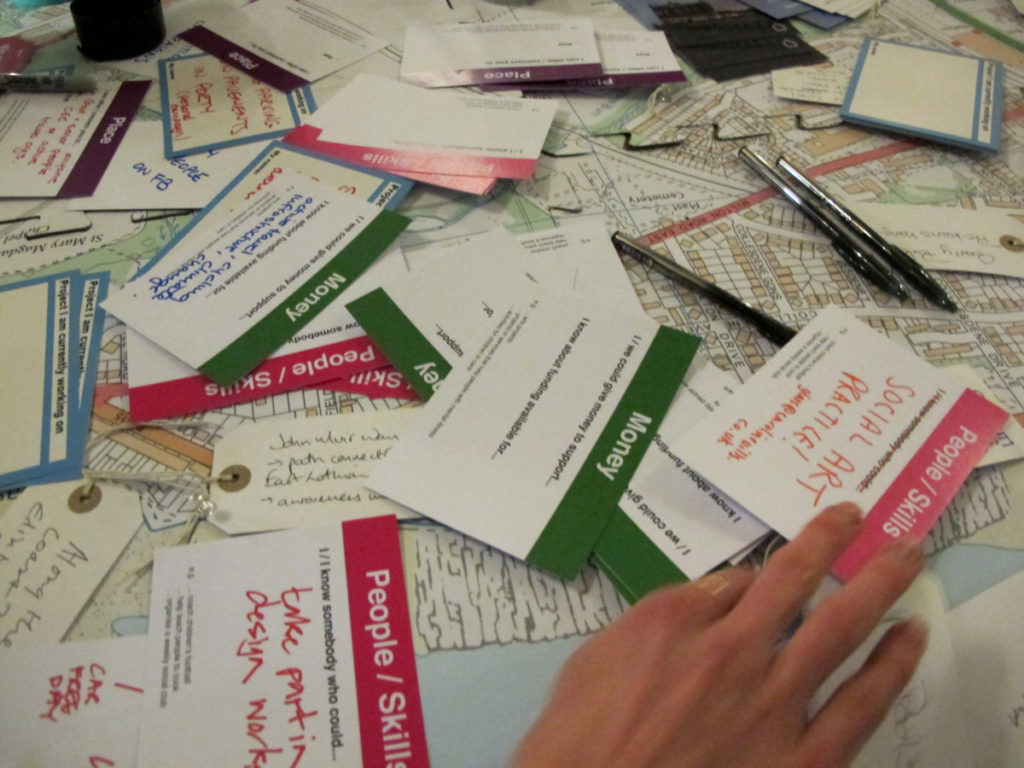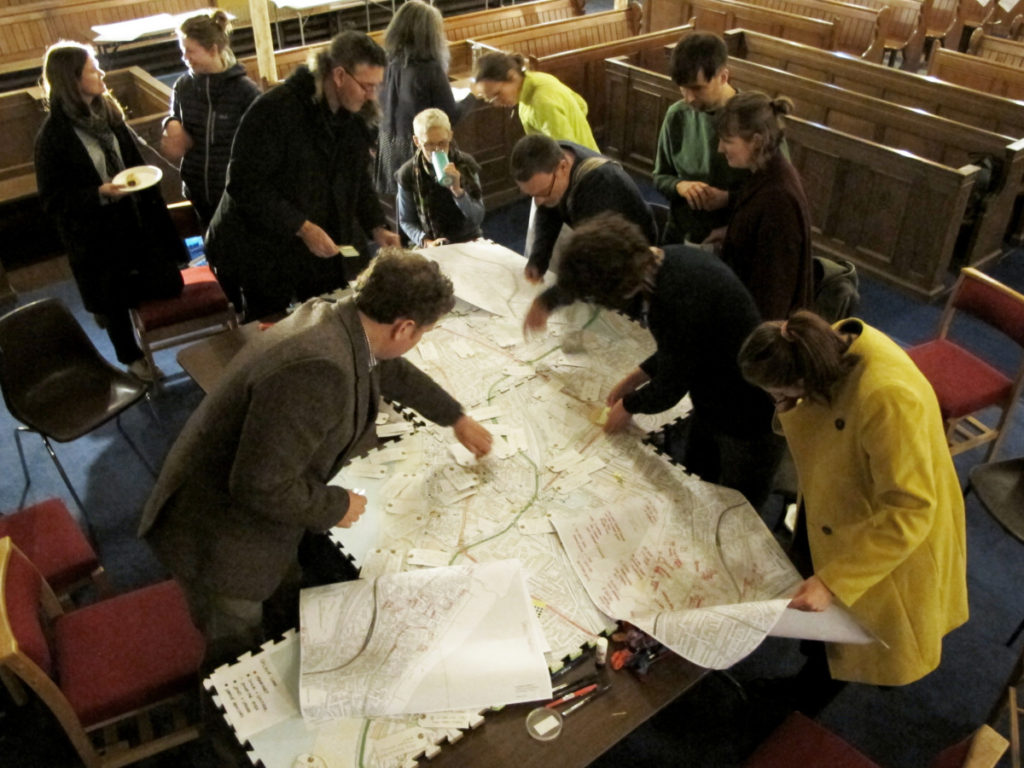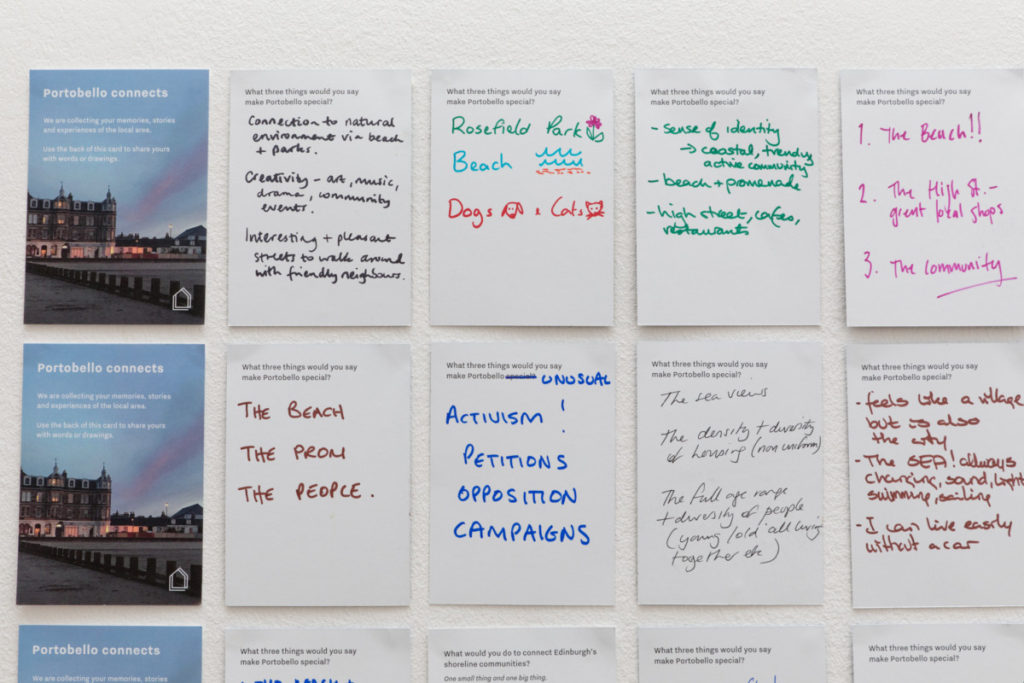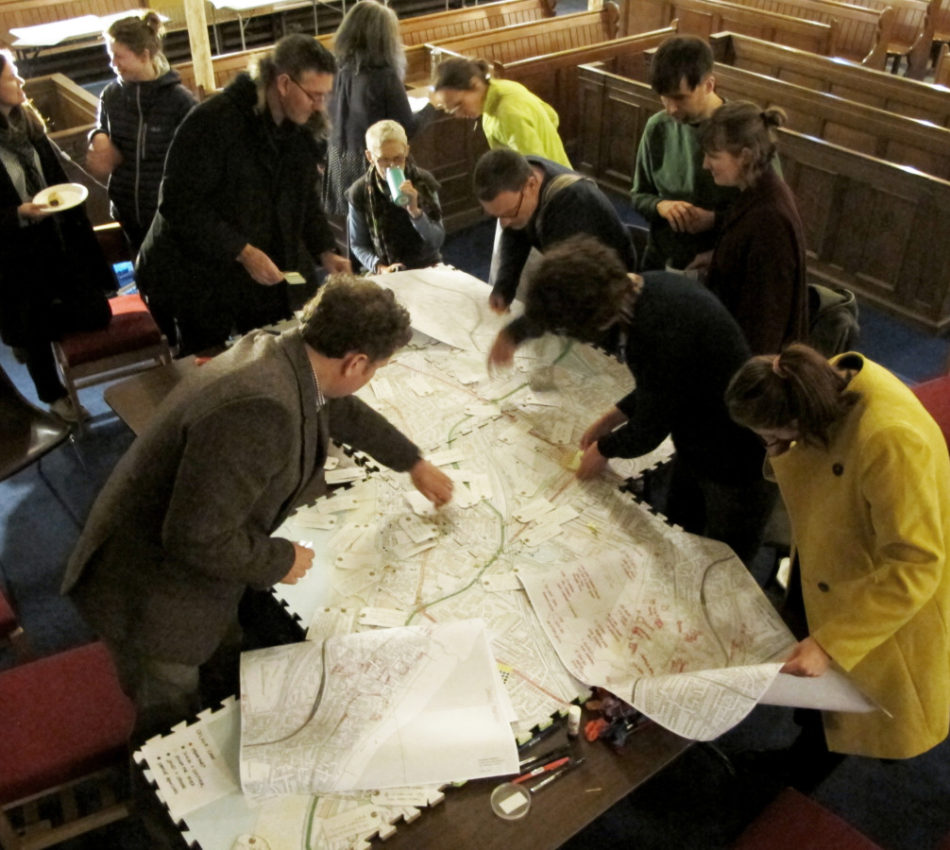Written by:
Portobello Connects as a Space for Innovation
Back in February 2019, The Glass-House worked with Architecture & Design Scotland to offer a free, public-facing event called Portobello Connects, in the coastal community on the shoreline of Edinburgh. The event was part of our first national WEdesign event series, which marked an evolution from our longstanding Glass-House Debates series, which brought together speakers and audiences for discussion and debate, to a format that also integrated a hands-on collaborative design task. Our intention was to create a more playful route into discussion than the traditional speaker format had offered and also, very importantly, to create a mechanism to introduce people to the power of collaborative design processes that bring together diverse people, organisations and interests in placemaking.
Portobello Connects was also the first time we had used our cross-pollination approach to support a place-based conversation. It brought together a diverse group of local people and organisations to talk about their area, share information on their projects and initiatives, and to explore mobilising their individual and collective assets through collaboration.

The cross-pollination approach emerged from our Scaling Up Co-design research project back in 2013/14. We were exploring how best to support collaboration across our research team, which included our Strategic Partner The Open University, along with other higher education partners and a diverse range of small not-for-profit organisations. Although the team shared some key objectives, we also worked in a variety of ways, with different specialisms, and with huge differences in the context in which we were working, as well as in the scale and associated resources at our disposal. Cross-pollination was our way of putting the pieces of our puzzle together and helped our research team enormously. After the project, we shared the approach within the research community and experimented with it as a tool to bring together different stakeholders in placemaking.
Portobello Connects was the first time we took cross-pollination into a community to bring people together to talk about a specific place.

Portobello Connects was a bit of a light-bulb moment for The Glass-House. We were amazed by how quickly and effectively the diverse event attendees began working together to map their local area, share information and to explore collaboration. We saw established power structures and siloed thinking give way to a spirit of generosity and collaboration. Those who took part were amazed by how much they discovered that they hadn’t known about their area, and by the wealth of interesting initiatives, people and organisations within their community. They also enjoyed the space we had created to have a conversation about their neighbourhood which was not focused on a specific regeneration scheme, housing development or planning policy, but was simply a conversation about the area they shared.
Experimenting with Cross-pollination
After Portobello Connects, we knew that we had to experiment more with this model, and since then have integrated the cross-pollination approach into much of the collaborative research we have been doing with our partners The Open University. It is of course at the heart of our current/recent project, Cross-pollination: supporting cross-sector collaboration in design and placemaking.
Four years after Portobello Connects, our research partnership returned to Edinburgh last month to deliver a cross-pollination workshop in collaboration with EVOC, to support a place-based conversation in Liberton and Gilmerton. This collaboration had emerged because our key contact at EVOC (Charlie Wright) had heard about Portobello Connects, had been inspired by it, and he thought that it might be a useful approach to help support one of the areas in which EVOC is working. We were able to integrate a partnership workshop into the cross-pollination research project to offer Share, Connect Create: Gilmerton & Liberton.
Reconnecting with Portobello Connects Participants
While in Edinburgh, we thought we’d also take the opportunity to check in with a couple of people who had taken part in Portobello Connects, to look back on their memories of the experience. We were fortunate to catch up with Ian Gilzean, who until recently was the Chief Architect for the Scottish Government, and with Frazer McNaughton, a member of the Community Council for the area. We were pleased that not only did they have positive memories of the event, but that Portobello Connects had contributed in some way to subsequent placemaking conversations and collaborations. Here are some of the highlights of our conversation with Ian and Frazer:
Inspiring New Ways of Working
We were delighted to hear from Ian that attending Portobello Connects had inspired him to take elements of the cross-pollination approach and collaborative placemaking into work he has done both within the Scottish Government and while on secondment to Edinburgh City Council.
At the time of Portobello Connects, the Scottish Government had been doing some work with Architecture + Design Scotland around co-design and co-production using design charettes, so Ian was already tuned into the notion of collaborative placemaking. However, what had struck him at Portobello Connects was our use of mapping as a tool to identify, celebrate and connect the positive things happening in the area. Rather than starting with identifying problems, or asking people to consult on a particular scheme or policy, our approach was to create a space for people to share projects and stories and as a means of opening up a broader place-based conversation which starts with local voices and stories.
One of the aspects of that approach that had stayed with him, was what bringing a more open and collaborative place-based conversation had done to increase the diversity of voices, to unleash creativity and ambitious thinking and to increase the potential for local people and organisations to meaningfully help shape and share decision-making.
Creating the Right Atmosphere
Both Ian and Frazer spoke of the importance of creating a comfortable and welcoming atmosphere to support conversations which were not rooted in decision-making, but instead an open and creative space to explore ideas.

Ian had been struck by people of diverse ages, backgrounds and roles within their community stepping into that space and working together as equals. Local volunteers leading small, local initiatives had the same space and were valued in the same way as professionals representing large organisations or government institutions who so often hold the power in traditional placemaking engagement activities. Portobello Connects invited everyone to put their ideas, initiatives and assets together to explore what they could do together which was not possible to do alone, and how collaboration might enrich what they were already doing. This was a space in which all were welcome and valued.

He transposed that “what if?” approach into work he was doing in Wester Hailes, and in particular, as a way to empower young people to bring their creativity and ideas into exploring what was possible there.
Frazer spoke of the power of working together through a set of hands-on activities to create a space for both collaboration and creative thinking that felt different from traditional meeting environments. He remembered that during the conversation, we spoke about mapping Portobello not only through a lens of physical infrastructure, but also through that of experiences, activities and relationships, and that this changed the dynamic of the conversation.
The Value of Considered Resources

Frazer also spoke of the importance of the resources we brought into Portobello Connects. As well as using our asset cards, we had playful voting activities using jars and marbles to explore and compare people’s association with the city, the neighbourhood and the shoreline. We had evocative postcards for people to share their stories and memories of Portobello and the shoreline. These were prompts for discussion, but also offered people quiet reflective spaces to think about their own relationships with their area.

Our then Design Champion Grace Crannis had lovingly crafted a large map which turned out to be the real centrepiece for discussion and both a practical and beautiful tool for our mapping activity. This was a practical and tactical prop for the event activities and a resource we could leave with the community. It was a large transportable map mounted on foam play mat puzzle pieces, which was practical for the workshop, but also easy to dismantle and reassemble. We were absolutely delighted to hear the Community Council has continued to use this prop for conversations about the area, and that they plan to use it for the emerging engagement activities around the 20-minute neighbourhood.
A Conversation That We Hope Will Continue
We are hugely grateful to Ian, Frazer and Charlie for sharing their reflections with us, as well as to all of the people who originally attended Portobello Connects. We were invited into a community to meet local people who so generously shared their stories, experiences and ideas by sitting down with others for an informal and exploratory conversation.
We are so glad to hear that others remember the event fondly and that it has helped in some way. We, ourselves, learned a huge amount from the experience.
We also want to celebrate the Bellfield and Action Porty which hosted us for both Portobello Connects and for our return visit. Find out more about how the community in Portobello took ownership of Bellfield Church via the Community Right to Buy Scheme here.
We look forward to further collaborations with EVOC and with the people and organisations of Portobello and Edinburgh, with Architecture + Design Scotland, the Community Council, the City Council and the Scottish Government, with everyone who joined us at Portobello Connects who would like to carry on the conversation.


